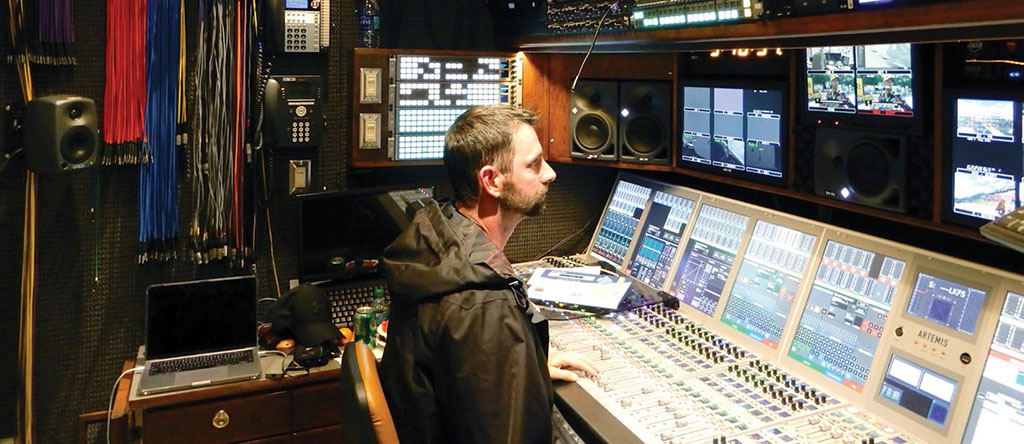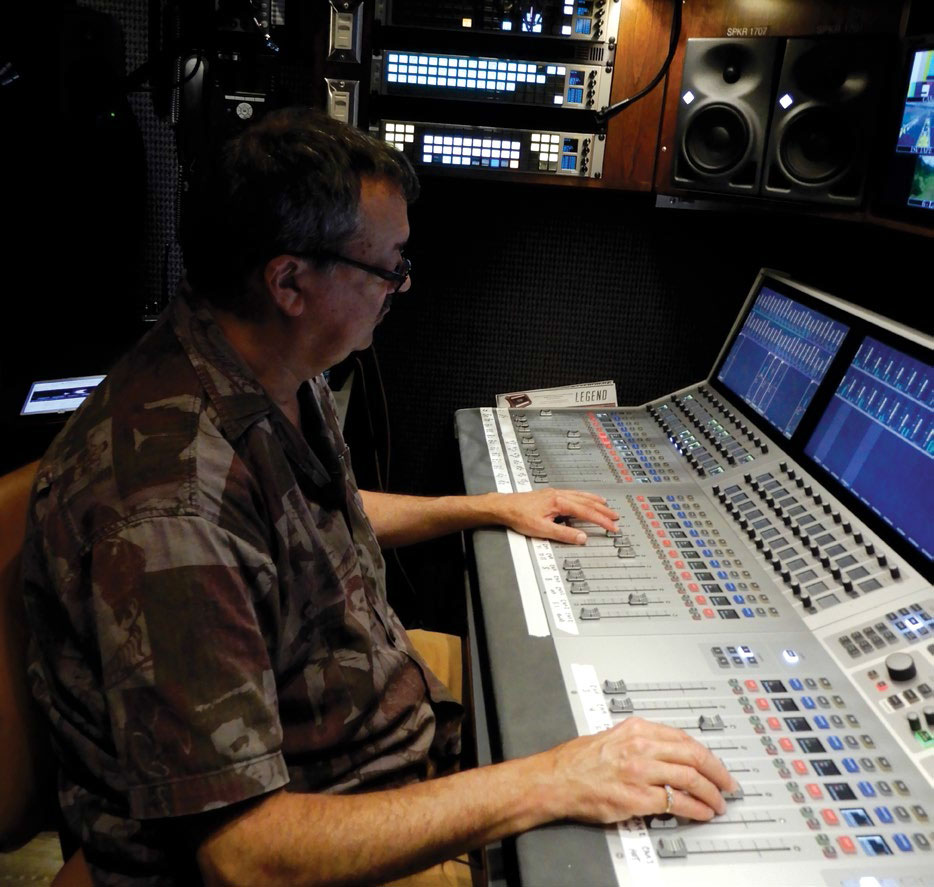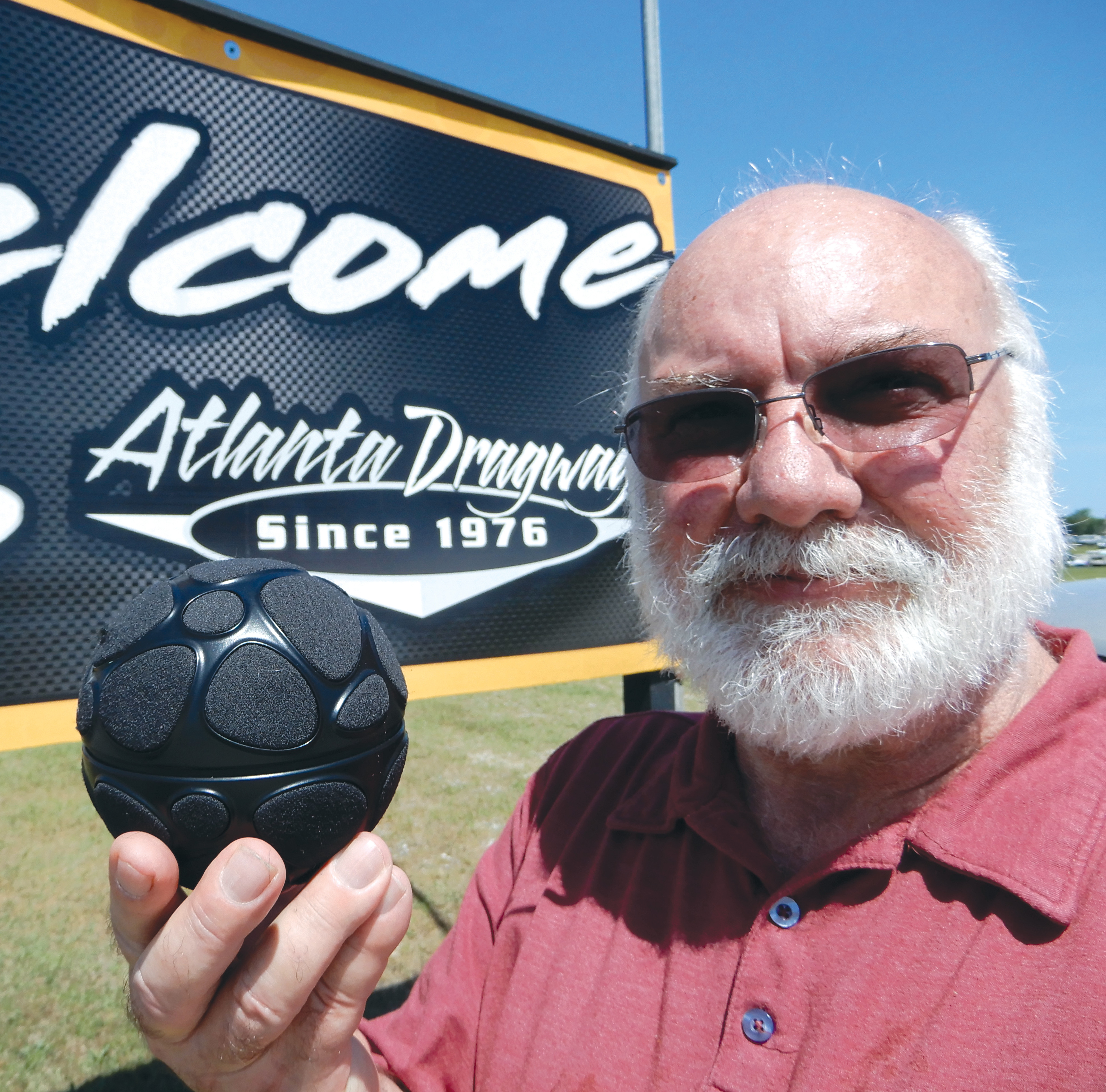Hearing It—Believing It
After talking to many of my colleagues, I will confidently say that if a sound mixer can reasonably hear immersive sound, they can mix it. The question is: How do we get there?

There are immersive sound mixing stages and studios in Hollywood and New York, but the number of mobile audio mixing facilities are few. Solutions are evolving; but it appears that adding more speakers and modifying existing OBs is the path forward for sports immersive sound. Generally, only the audio mix positions will need to be fitted for 5.1.4 immersive sound monitoring.
POSITIONING SPEAKERS
In my April article in TV Technology, I mentioned that Game Creek and NEP are OB providers that have modified existing OB vans for immersive sound mixing. For the National Hot Rod Association (NHRA) Drag Racing, Game Creek installed similar speaker setups in both mix rooms for A1 Josh Daniels and effects mixer Rusty Roark to listen to. I was told that the mix rooms were small and there had to be compromises with the positioning of the speakers.
Before my visit, I asked Mike Rokosa with NHRA to send me a 5.1.4 production clip to preview on my 11.1 Genelec system. In the studio, I was impressed with the movement of the sound in the horizontal and vertical soundfield and even more amazed after I personally spent a weekend at the drag races. I sat in the A1 mix position and listened to a couple of races.
I could clearly hear the intricacies of the immersive effect mix in the OB van. I admit I was surprised at the positioning of the height speakers, but did not let my eyes prejudice what my ears heard, particularly since I had already auditioned the mix in an accurate monitoring environment.
Most OB vans have limited space to mount more speakers, much less accurately align and calibrate them. According to Thomas Lund, chief technologist at Genelec Speakers, compact speaker designs are available, and Genelec’s 8331 systems had been installed in applications with a listening distance of as little as 70 cm, which still delivered an accurate representation of the soundfield to the mixer.
I also talked to Mike Babbitt, an applications engineer with Dolby, about tuning the speakers in the Game Creek OB mix rooms. Babbitt worked with NHRA on the implementation of immersive sound.

“All speakers [not the sub] were set to reproduce the same SPL at the listening position using ‘pink noise,’” he said. “For the sub, we try to set it with 10 dB in-band gain compared to the center channel, which approximates to about a 3 dB SPL bump using an SPL meter.” There was no time for alignment of the speakers.
Another compromising factor is that the immersive 5.1.4 mix is being accomplished on concentric 5.1 busses. Although I am a big advocate of true XYZ panning, all I can say is that the NHRA sound model is very creative, clever and it works for their sport. (Watch for my interviews with Daniels and Roark detailing the audio mapping and mixing that makes this an artistically creative mix.)
ALTERNATIVE MIXING
As immersive sound production develops, we should consider alternative mixing solutions for live sports and entertainment. Mixing the immersive sound (Surround Sound) from a different location has been successfully accomplished for several World Cup productions. Master control should be monitoring immersive sound and could easily composite the audio stems from the OB van and build an immersive mix in a centralized control room. This is clearly a solution for many field-type sports such as baseball, football and soccer.
One final consideration: I suggest researching virtual/programmable soundfield reproduction for the audio mix room. Beam steering of microphones and speakers to create virtual soundfield patterns is a developed and well-understood technology. As critical listening space becomes a necessity, perhaps an alternative approach to monitoring in the OB van should be assessed.
There will be a variety of immersive sound productions that requires a range of immersive sound monitoring. Critical listening for localization may be far more important in film, but when the height channels are a wash of distant crowd and PA, then I would suggest that, for many sports (not all), critical listening is more of a judgment about spatialization of the sound elements than localization. Also, consider that the soundbar is the probable method of delivery for immersive sound and that precise localization from up-firing and side-firing speaker configurations is not possible in most home applications.
It seems as though the OB van companies are finding solutions. By modifying existing mix space, this will facilitate the conversion to useable immersive sound mixing spaces. Perhaps there should be a rating system for mixing spaces so that you can evaluate an OB van beyond how many cameras or monitors there are for production.
I think many would acknowledge that the migration to immersive sound will be a layer and a step at a time. NHRA is testimony to the fact that convincing immersive sound can be produced today.
Immersive sound technology is getting ready. Are you?
Dennis Baxter has spent over 35 years in live broadcasting contributing to hundreds of live events including sound design for nine Olympic Games. He is the author of “A Practical Guide to Television Sound Engineering,” published in both English and Chinese, and is currently working on a book about immersive sound practices and production.
He can be reached atdbaxter@dennisbaxtersound.comor atwww.dennisbaxtersound.com.
Get the TV Tech Newsletter
The professional video industry's #1 source for news, trends and product and tech information. Sign up below.
Dennis Baxter has spent over 35 years in live broadcasting contributing to hundreds of live events including sound design for nine Olympic Games. He has earned multiple Emmy Awards and is the author of “A Practical Guide to Television Sound Engineering,” published in both English and Chinese. His current book about immersive sound practices and production will be available in 2022. He can be reached at dbaxter@dennisbaxtersound.com or at www.dennisbaxtersound.com.

